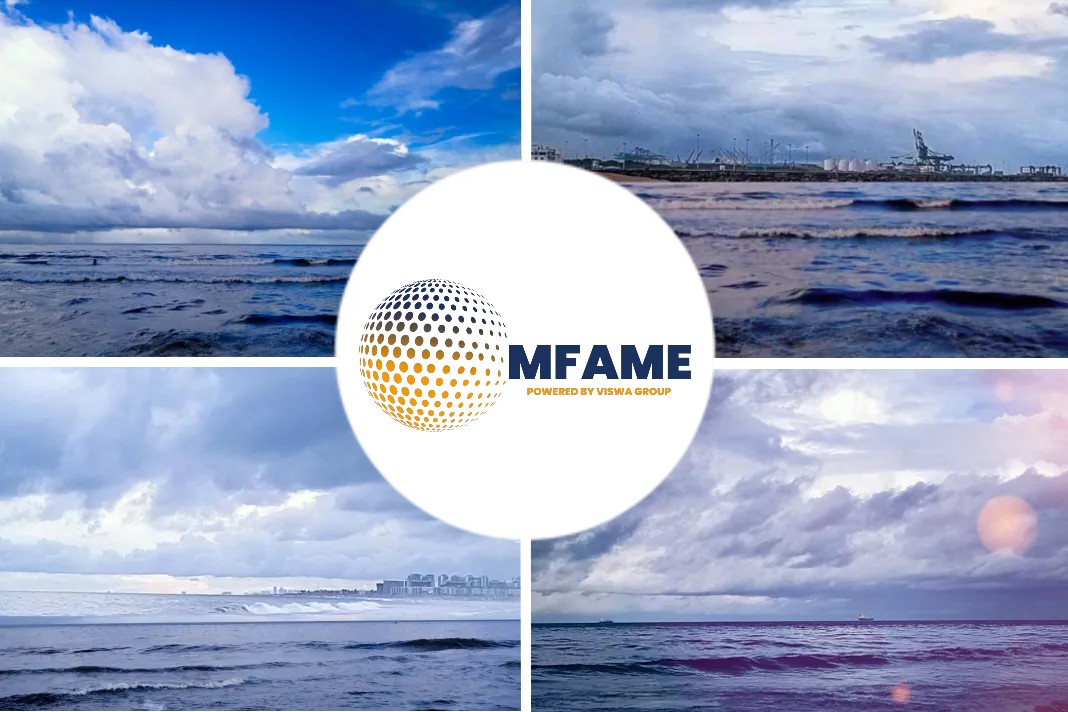According to an article published in Platts, Chinese state-run company Cosco Shipping Energy Transportation’s recent order of an LNG-fueled VLCC is a significant development in the wider adoption of natural gas as a marine fuel, even though it may not signal a wave of industry orders just yet.
Interest in decarbonization
The order shows that the largest cargo ships are able to run economically on gas and that industry heavyweights like Chinese national oil companies, or NOC, are taking interest in decarbonization of transportation fuels, which will be needed to move the needle in the broader energy transition.
The selection of a Chinese shipyard is also notable because the country has typically lagged behind its South Korean peer in LNG shipbuilding technologies, and like the push for electric vehicles, represents a desire to gain the upper hand in future manufacturing capabilities.
In end-December 2019, Cosco Shipping Energy Transportation announced an agreement with Chinese shipyard Dalian Shipbuilding to upgrade a previously ordered VLCC to a dual-fuel ship that uses LNG as its main fuel. The upgrade will require an additional payment of $6 million, Cosco Shipping Energy Transportation, the energy subsidiary of Chinese shipping giant Cosco, said in a public document.
In November 2019, the average price of a newbuild VLCC was about $91.8 million, according to Italian shipbroker Bancosta. This means the LNG propulsion upgrade adds roughly 7% to ship cost and that Cosco expects the additional capital expenditures to be recoverable over the 20-year working life of the VLCC. The fuel cost is only part of the consideration
Cosco said its decision was prompted by the IMO 2020 global sulfur cap, effective January 1, and “phase 3 of the implementation of the Energy Efficiency Design Index standards imposed by the IMO on new vessels“ from 2025 onward that places stringent requirements on CO2 emissions.

Energy transition
Cosco’s move is the first confirmed order of its kind.
The other big push came from Greek shipowner Capital Maritime & Trading, which signed a letter of intent for up to 10 LNG-fueled VLCCs at a South Korean yard in 2019, according to maritime reports.
These orders are yet to be confirmed.
So far, the push for LNG as a fuel has been in sectors like cruise ships, nearshore ships that operate close to port limits, a handful of large container ships and some dry bulk ships.
In the oil tanker segment, companies have looked at smaller tankers like Aframaxes with shorter routes, but not large ships like VLCCs that trade globally. For instance, Malaysia’s state-run Petronas and its shipping subsidiaries MISC and AET Tankers have LNG-fueled Aframaxes in their fleet.
Oil majors have been driving LNG-fueled shipping by financing newbuilds in return for building LNG bunkering infrastructure and signing LNG bunker supply contracts. This helps them generate downstream demand for their LNG output.
Shell and Russian shipowner Sovcomflot teamed up for LNG-fueled Aframaxes on Baltic routes, France’s Total and CMA CGM partnered for LNG-powered container ships, and Australian mining companies are working with LNG producer Woodside.
While oil majors have taken the lead, NOCs are needed to reach critical mass and cross the threshold of adoption, especially in Asia.
Cosco largely charters its ship to Chinese state-run oil majors like Sinopec and its trading arm Unipec. Once the likes of Cosco, Saudi Arabia’s Bahri and Japanese shipping giants like MOL and NYK are in the game, LNG-fueled cargo ships will be the norm.
Over time, freight rates will also be impacted, as ships with the tightest specifications will command the highest chartering rates — seen when double-hulled ships became mandatory and will now be applicable for IMO-compliant ships.
Cost considerations
In late 2019, SEA\LNG, an advocacy group for LNG as a marine fuel, conducted a study in which LNG delivered “compelling paybacks” over 10 years for a 300,000 dwt VLCC on the Persian Gulf to China route.
The study showed a VLCC using dual-fuel engines saved between $6.1 million to $15.1 million across different freight market scenarios as compared with compliant fuels, although it was less competitive than scrubber-fitted ships, without accounting for the future cost of carbon emissions.
The reported additional $6 million investment needed for a dual-fueled LNG system, including the engine, is $10 million lower than assumed in SEA\LNG’s recent study with independent experts Opsiana, SEA\LNG’s Chief Operating Officer Steve Cadden said via email.
“This much lower cost would mean that investing in LNG-fueled vessels is far more profitable than we modelled, with a shorter payback period making the option significantly more feasible for shipowners,“ he added.
Additionally, the Hong Kong Exchange has started consultations for the implementation of Environment, Social and Governance guidelines for its listed companies, including climate change mitigation and environmental targets, enforceable as early as July 2020.
This provides more incentive for NOCs with HKEX listings like Sinopec and Cosco to push for energy transition.
Did you subscribe to our daily newsletter?
It’s Free! Click here to Subscribe!
Source: Platts


















